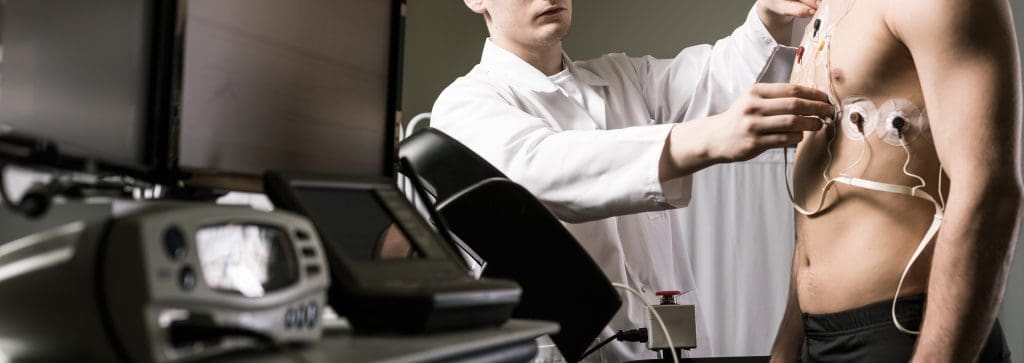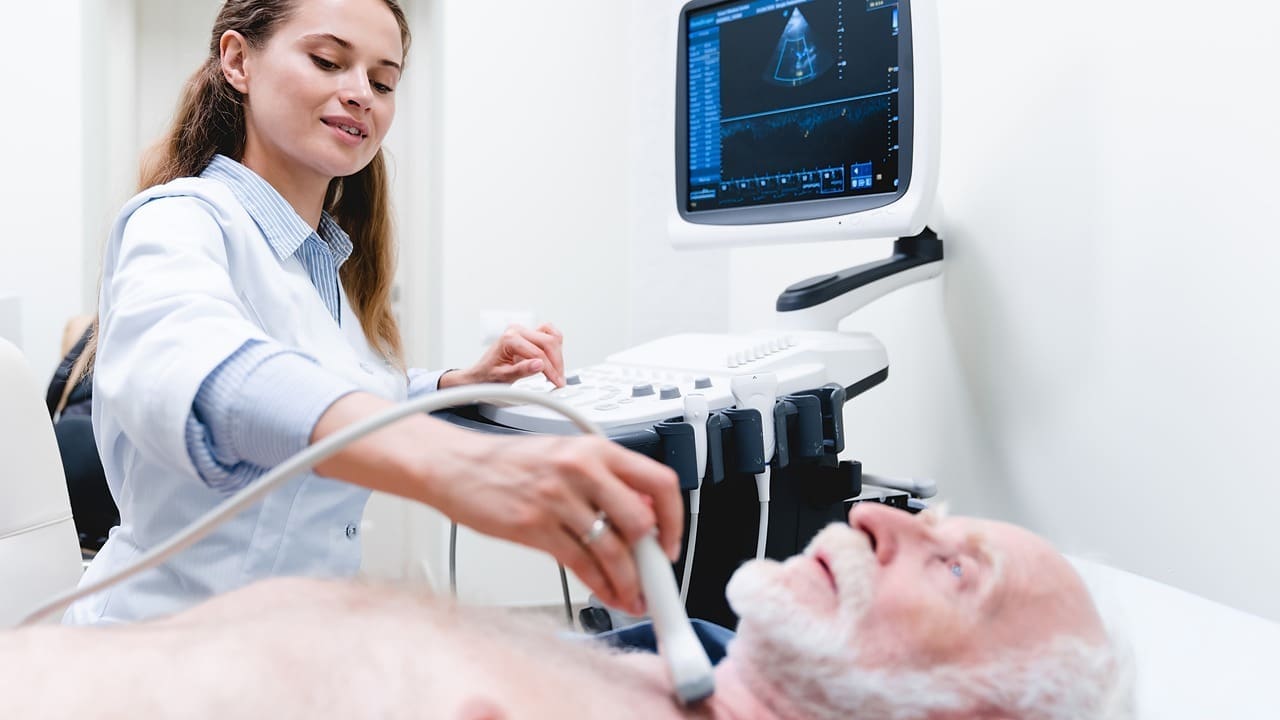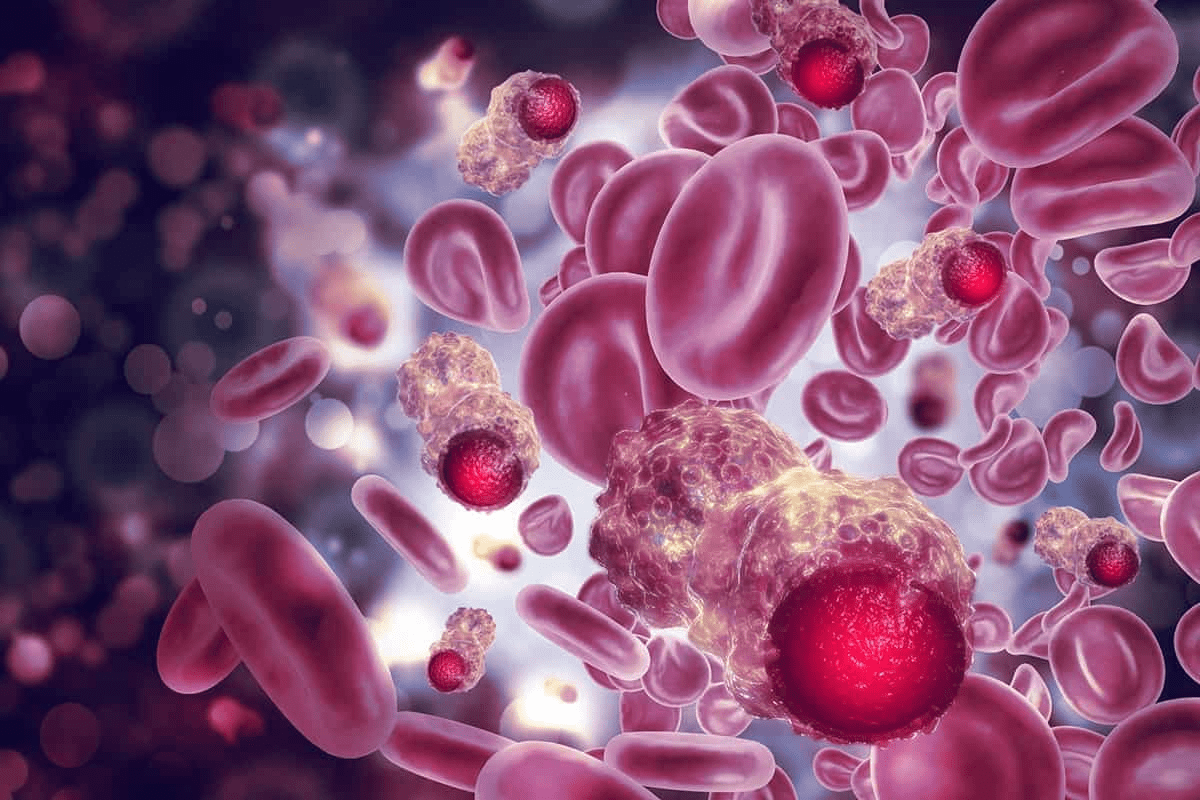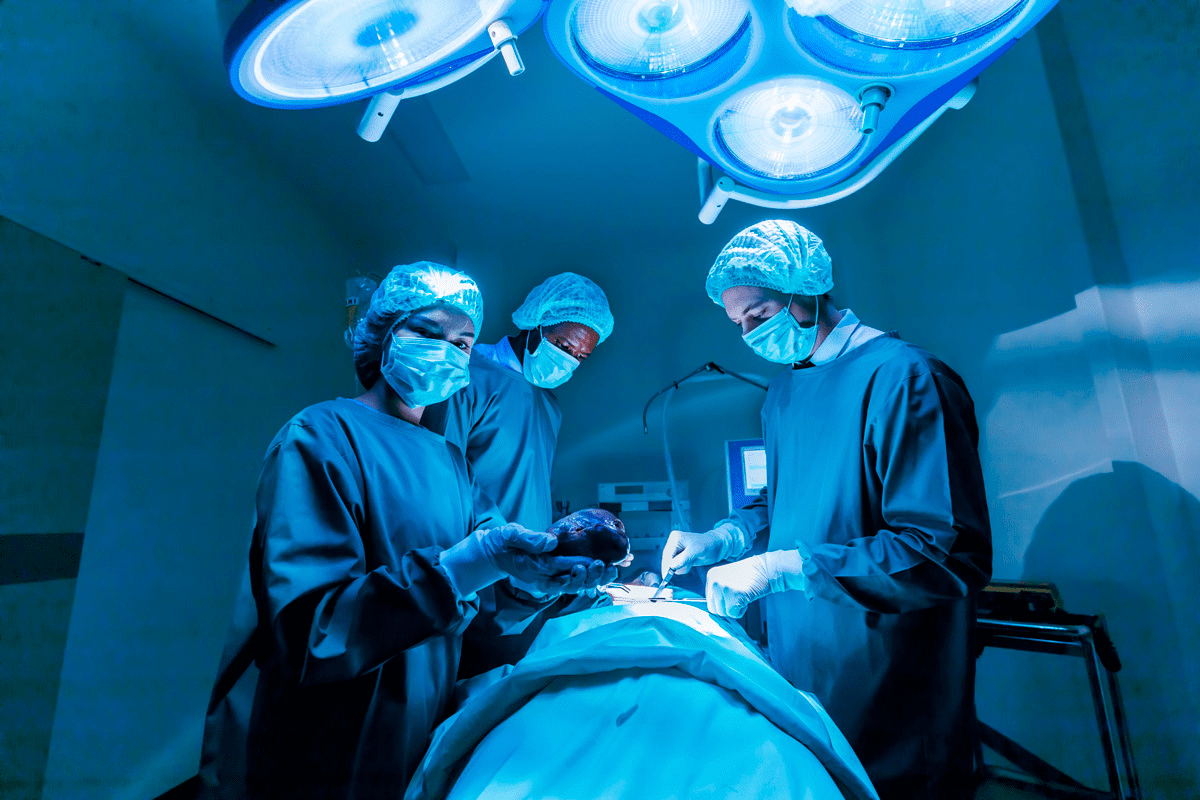Last Updated on November 27, 2025 by Bilal Hasdemir
A nuclear stress test is a key tool for checking how well blood flows to the heart. It measures blood flow to the heart during rest and physical activity. This test helps doctors spot coronary artery disease, where the heart’s arteries get narrowed or blocked.
This test uses a tiny bit of radioactive material to make pictures of the heart. Doctors can see where blood flow is limited. Many patients then ask, “What is the next test after a nuclear stress test? since understanding the results often determines what follow-up steps are needed. Knowing the results of this test is important for figuring out what to do next for the patient.
Key Takeaways
- A nuclear stress test is used to diagnose coronary artery disease.
- The test assesses blood flow to the heart at rest and during exercise.
- It uses a small amount of radioactive material to create heart images.
- Understanding test results is vital for determining next steps.
- The test helps doctors identify areas of restricted blood flow.
Understanding the Purpose of a Nuclear Stress Test

A nuclear stress test is used to check for coronary artery disease. It shows how well the heart works when stressed, either through exercise or medicine.
How Nuclear Stress Tests Evaluate Heart Function
Nuclear stress tests use tiny amounts of radioactive tracers like thallium or Cardiolite. These tracers help see the heart’s blood flow. Images are taken at rest and after stress to compare blood flow to the heart muscle.
Types of Nuclear Stress Tests: Exercise vs. Pharmacological
There are two main types of nuclear stress tests. Exercise stress tests use physical activity, like walking on a treadmill. Pharmacological stress tests use medicines like Lexiscan for those who can’t exercise.
What These Tests Can and Cannot Detect
Nuclear stress tests can spot coronary artery disease and its severity. They help figure out the best treatment. But, they might not catch all heart issues or give full details on the heart’s structure. More tests might be needed for a full heart health picture.
Knowing what nuclear stress tests do helps patients prepare and understand their results better.
Interpreting Nuclear Stress Test Results
Understanding nuclear stress test results is key to knowing how well your heart works. These tests show if your heart gets enough blood flow when you’re active and when you’re not.
Normal vs. Abnormal Findings
If your test shows a normal result, it means your heart muscle gets enough blood flow. But, abnormal results might point to heart disease or other heart issues. These issues can be either reversible or irreversible.
| Result Type | Description | Implication |
| Normal | Adequate blood flow at rest and during stress | No significant coronary artery disease |
| Reversible Defect | Blood flow is inadequate during stress but normal at rest | Possible coronary artery disease; ischemia |
| Irreversible Defect | Blood flow is inadequate both at rest and during stress | Possible scar tissue from previous heart attack |
Common Reasons for Inconclusive Results
Sometimes, test results are unclear. This can happen if the stress level isn’t high enough, if there are technical problems, or if the patient has obesity.
How Doctors Determine the Need for Follow-Up Testing
Doctors look at many things to decide if more tests are needed. They consider your medical history, symptoms, and the test results. Additional testing helps them understand your heart better and figure out the best treatment.
Coronary Angiography: The Gold Standard Follow-Up
Coronary angiography is the top choice for finding coronary artery disease. It’s often used after a nuclear stress test to check findings. This test uses a special dye and X-ray imaging to see the coronary arteries.
When Angiography is Recommended After a Nuclear Stress Test
A nuclear stress test might show coronary artery disease. But it doesn’t show the coronary arteries clearly. Coronary angiography is suggested when the test results are unclear or show big blockages. It helps doctors see how bad the blockages are and where they are.
The Procedure and What to Expect
In cardiac catheterization, a thin tube is put into an artery in the leg or arm. It’s then guided to the coronary arteries. A contrast dye is injected, and X-ray images are taken. The test is done under local anesthesia, and patients are awake but relaxed.
Risks, Benefits, and Recovery Time
Coronary angiography is mostly safe, but there are risks like bleeding and allergic reactions. The big plus is it gives a clear diagnosis of coronary artery disease. This lets doctors treat it right. Recovery is quick, with most people back to normal in a day.
Cardiac Catheterization: Diagnostic and Therapeutic Benefits
For those with worrying nuclear stress test results, cardiac catheterization offers clear insights and treatment options. This method involves putting a catheter into the heart. It lets doctors see the coronary arteries up close and check their health.
The Link Between Nuclear Stress Tests and Catheterization
Nuclear stress tests can show if there’s a problem with the heart’s blood flow. If the test shows something off, doctors might suggest a cardiac catheterization. This helps confirm the issue and decide on the best treatment.
Procedure Details and Patient Experience
A catheter is put into an artery in the leg or arm and guided to the heart during cardiac catheterization. The procedure is done under local anesthesia, with some sedation. Patients might feel a bit of discomfort when the catheter is inserted, but most find it tolerable.
Interventional Options During Catheterization
Cardiac catheterization also allows for immediate interventions. If a blockage is found, doctors can do an angioplasty to open the artery. They might also place a stent to keep it open. This can greatly improve blood flow to the heart, easing symptoms and possibly preventing a heart attack.
| Procedure | Description | Benefits |
| Cardiac Catheterization | Insertion of a catheter into the heart to visualize coronary arteries | Diagnostic clarity, immediate intervention possible |
| Angioplasty | Opening blocked arteries using a balloon | Improves blood flow, reduces symptoms |
| Stent Placement | Placing a stent to keep the artery open | Keeps the artery open, prevents narrowing |
Cardiac catheterization is a key tool for diagnosing and treating heart issues. It offers a detailed look at the heart and allows for treatments during the same visit. Knowing what to expect can help patients prepare for this important part of their heart care.
Cardiac CT Angiography as a Non-Invasive Alternative
Cardiac CT Angiography is a less invasive way to see the coronary arteries compared to traditional angiography. It’s great for patients who need more checks after a nuclear stress test.
Comparing CCTA to Traditional Angiography
Traditional angiography uses a catheter to see blockages in the arteries. On the other hand, Cardiac CT Angiography uses X-rays and dye to show the heart and blood vessels. This method is safer because it doesn’t need a catheter.
CCTA is good for those at low risk of heart disease or who can’t have invasive tests. It’s a fast and easy way to check the heart’s arteries.
When CCTA is Preferred After a Nuclear Stress Test
If a nuclear stress test shows odd blood flow, CCTA is often chosen. It gives clear images of the arteries without needing a catheter.
Doctors might pick CCTA for unclear test results or to see the arteries better.
Preparation and Procedure Details
Before a CCTA, patients can’t eat or drink for hours and might skip some meds. During the test, dye is injected, and the patient must stay very quiet while the CT scanner takes pictures.
The test itself is short, lasting 10-15 minutes. But getting ready and recovering can take longer.
Cardiac MRI for Tissue Characterization
Unlike nuclear stress tests, Cardiac MRI gives a detailed look at heart tissue. It helps understand heart health better.
What Cardiac MRI Reveals That Nuclear Stress Tests Don’t
Cardiac MRI, or heart MRI, shows the heart’s structure and function in detail. It spots scar tissue, inflammation, and fibrosis. These issues might not show up on nuclear stress tests.
MRI cardiology is key for cardiologists. It offers insights for better treatment and heart condition management.
Specific Indications for Cardiac MRI After Stress Testing
A Cardiac MRI is suggested after a nuclear stress test for more detailed heart tissue info. It’s used to check cardiac damage after a heart attack, evaluate cardiomyopathy, and diagnose myocarditis.
| Condition | How Cardiac MRI Helps |
| Cardiac Damage Post-Heart Attack | Assesses the extent of scarring and damage |
| Cardiomyopathy | Evaluates the heart muscle’s structure and function |
| Myocarditis | Diagnoses inflammation of the heart muscle |
Patient Experience and Contraindications
The cardiac imaging process in a Cardiac MRI is non-invasive. It takes about 30 to 60 minutes inside an MRI machine. It’s safe for most, but some metal implants or pacemakers might be a problem.
Some might feel claustrophobic and need sedation. Tell your doctor about any kidney issues. Some MRI contrast agents might not be good for you.
Echocardiogram: Assessing Heart Structure and Function
Echocardiograms give us a close look at how well the heart works and its structure. They are non-invasive tests that use sound waves to create heart images. This helps doctors see if the heart is healthy.
Types of Echocardiograms That May Follow a Nuclear Stress Test
After a nuclear stress test, doctors might use different echocardiograms. Transthoracic echocardiography (TTE) is the most common. It uses an ultrasound probe on the chest. Transesophageal echocardiography (TEE) involves a probe in the esophagus for clearer images.
Stress Echocardiography vs. Nuclear Stress Testing
Stress echocardiography combines ultrasound with stress testing to check heart function. It’s different from nuclear stress testing, which looks at blood flow to the heart. Stress echocardiography focuses on heart function and structure.
What Additional Information Echocardiograms Provide
Echocardiograms offer more insights into heart health. They show how well heart valves work and if there are any heart structure issues. They also check the heart’s pumping efficiency. This info is key for deciding what to do next for the patient.
Rhythm Monitoring After Abnormal Nuclear Stress Test Results
Rhythm monitoring is key in diagnosing and managing heart rhythm disorders after an abnormal nuclear stress test. It helps find arrhythmias that might not show up in a standard test.
Abnormal nuclear stress test results can point to heart conditions like coronary artery disease or cardiomyopathy. Rhythm monitoring helps link arrhythmias with heart defects. This gives a clearer picture of the heart’s health.
Holter Monitors and Event Recorders
Holter monitors are small, portable devices that record the heart’s rhythm for 24 to 48 hours. They’re great for catching arrhythmias that happen often. Event recorders are used for up to 30 days and are turned on by the patient when symptoms appear.
Both devices offer important insights into the heart’s electrical activity. This helps doctors diagnose and manage arrhythmias well.
| Device | Duration | Activation | Usefulness |
| Holter Monitor | 24-48 hours | Continuous | Frequent arrhythmias |
| Event Recorder | Up to 30 days | Patient-activated | Intermittent symptoms |
Implantable Loop Recorders for Long-Term Monitoring
Implantable loop recorders (ILRs) are small devices implanted under the skin, usually near the collarbone. They can monitor the heart’s rhythm for years, giving long-term data on arrhythmias.
“ILRs have revolutionized the diagnosis of unexplained syncope and palpitations by providing prolonged monitoring without the need for external devices.”
Correlating Arrhythmias with Perfusion Defects
It’s important to link arrhythmias with heart defects found in nuclear stress tests. Rhythm monitoring devices help doctors see if arrhythmias are caused by reduced blood flow in the heart.
This detailed approach helps healthcare providers create better treatment plans. It improves patient outcomes.
The Complete Nuclear Stress Test Procedure and Safety
The nuclear stress test procedure has several steps, from getting ready to the actual test. Knowing these steps can help reduce anxiety. This test is key for checking how well the heart works, mainly for those with heart disease.
Before, During, and After the Test
Before the test, you might be told not to eat certain foods or take some medicines. This is to make sure the test results are accurate. During the test, a special dye is put into your blood. A camera then takes pictures of your heart when it’s stressed and when it’s not.
Getting ready is important for good test results. You might be asked to wear loose clothes and not eat a big meal before. During the test, you’ll lie on a table while the camera takes pictures of your heart.
| Test Stage | Procedure | What to Expect |
| Before | Avoid certain medications and foods | Instructions from healthcare provider |
| During | Injection of radioactive tracer | Images taken by a special camera |
| After | Rest and hydration | Minimal side effects, results analyzed |
Lexiscan and Other Pharmacological Stress Agents
For those who can’t do physical stress, Lexiscan is used. It makes blood flow to the heart like exercise does. This lets doctors get clear images of the heart.
Radiation Exposure and Precautions After Testing
One worry about nuclear stress tests is radiation. But the dose is usually safe. After the test, drinking lots of water and avoiding close contact with others for a bit is advised. This helps keep others safe from radiation.
Knowing about the nuclear stress test and its safety can make you feel more at ease. It’s a vital tool for checking heart health.
How Doctors Choose the Next Test After a Nuclear Stress Test
Choosing the next test after a nuclear stress test is a detailed process. Doctors look at the test results and the patient’s health. This way, they make sure the next test fits the patient’s needs perfectly.
Decision-Making Based on Specific Test Results
Doctors study the nuclear stress test results to find out about heart disease. Abnormal test results might mean they need to do more tests. For example, if the test shows a lot of damage, they might want to do a more detailed check.
The kind of test needed next depends on what the nuclear stress test found. If there’s a big blockage, coronary angiography might be suggested. It gives a clearer view of the heart’s arteries.
Patient-Specific Factors That Influence Test Selection
Each patient’s health history and current symptoms are important. These factors help decide the best test. For example, patients with kidney disease might need special tests to avoid problems.
When Multiple Follow-Up Tests May Be Necessary
Sometimes, one test isn’t enough. This is true if the first test doesn’t give clear answers or if the patient’s health is complex.
Doctors consider both the test results and the patient’s health to plan the best course of action. This ensures they get the right diagnosis and treatment.
Conclusion
A nuclear stress test is key for checking heart health and finding heart disease issues. The test’s results help decide on more tests and treatments.
After a nuclear stress test, doctors might suggest tests like coronary angiography or cardiac MRI. These help doctors get a clear picture of the heart and plan the best treatment.
Knowing how important nuclear stress tests and follow-up tests are helps keep the heart healthy. These tools help doctors find problems early. This can prevent serious issues and improve health outcomes.
In short, a nuclear stress test is vital for diagnosing and managing heart disease. It lets doctors give care that fits each patient’s needs.
FAQ
What is a nuclear stress test?
A nuclear stress test is a test that uses a small amount of radioactive material. It checks how well the heart works and blood flows to the heart muscle.
How long does a nuclear stress test take?
It usually takes 3-4 hours to finish a nuclear stress test. But the actual test time is about 30-60 minutes.
What is the difference between a nuclear stress test and a chemical stress test?
A nuclear stress test uses a radioactive tracer to see the heart. A chemical stress test uses medicine to stress the heart without radioactive material.
What does a nuclear stress test show?
It shows if parts of the heart don’t get enough blood. This can mean coronary artery disease or other heart issues.
How long are you radioactive after a nuclear stress test?
The radioactive material leaves your body in a few hours to days. This depends on the tracer used.
What are the risks and dangers of a nuclear stress test?
Nuclear stress tests are mostly safe. But, there are risks like radiation exposure, allergic reactions, and complications from the test.
What is the next test after a nuclear stress test?
The next test depends on the results. It might be coronary angiography, cardiac catheterization, or cardiac CT angiography.
How do doctors choose the next test after a nuclear stress test?
Doctors pick the next test based on the nuclear stress test results and patient factors.
What is the difference between a nuclear stress test and an echocardiogram?
A nuclear stress test checks blood flow to the heart muscle. An echocardiogram looks at the heart’s structure and function.
Can a nuclear stress test detect arrhythmias?
Sometimes, a nuclear stress test can find arrhythmias. But, it’s not mainly for this. Tests like Holter monitors or event recorders are used instead.
What is Lexiscan, and how is it used in nuclear stress tests?
Lexiscan is a medicine used in nuclear stress tests. It’s for patients who can’t exercise.





